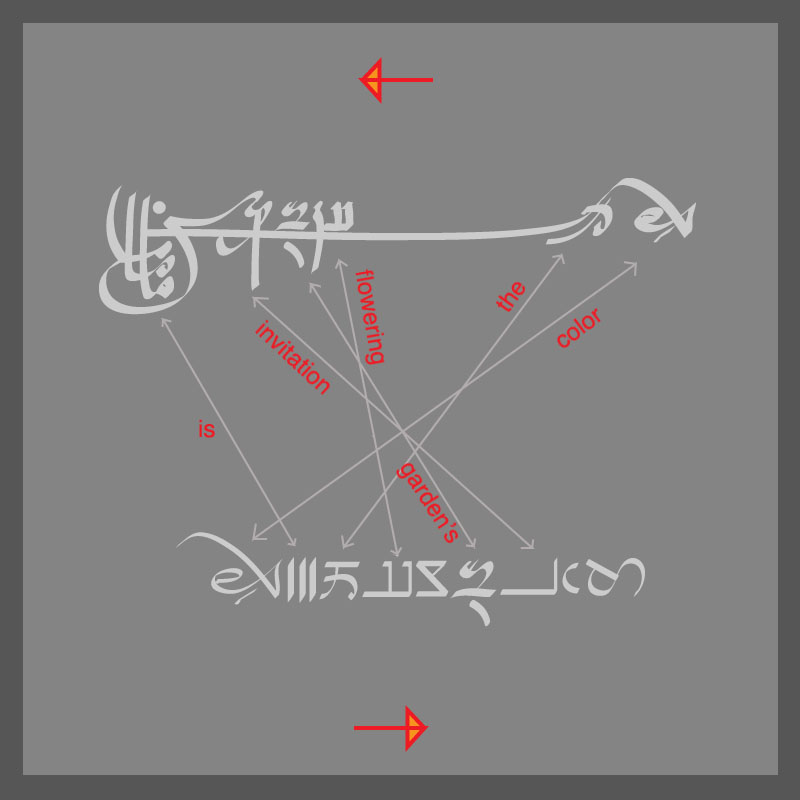
Another quirk you will encounter when reading from right to left in Tapissary, is that the primary verb generally comes at the end of the sentence. It helps balance the shape of the phrase. Supporting verbs come at the front of the phrase. For instance, if you say: "The deer kneeled beneath the tree to avoid the sun", the word order would not change in SUNSET direction, however when writing in SUNRISE, the verbs frame the phrase, yielding: "Kneeled the deer beneath the tree the sun to avoid". This is a design principle. Verbs are generally heavier shapes in SUNRISE, and make good brackets for the communication. There is also an ideological course behind the sinewy verbs of Tapissary. A verb is not an object you can pin down like a noun, but it is the glue which binds subject and object. The verb's essence is extended into its neighbors. This is shown quite literally in Tapissary's SUNRISE script. The outer rims of the phrase are constructed with a similar effect as a potter bringing up the sides of a bowl on the wheel. They will both provide a nest for contents. Continue to the next page for a list of the comparative vocabulary used in the example image above.


